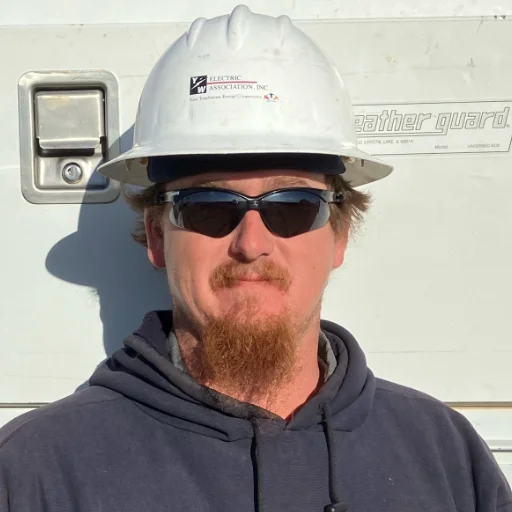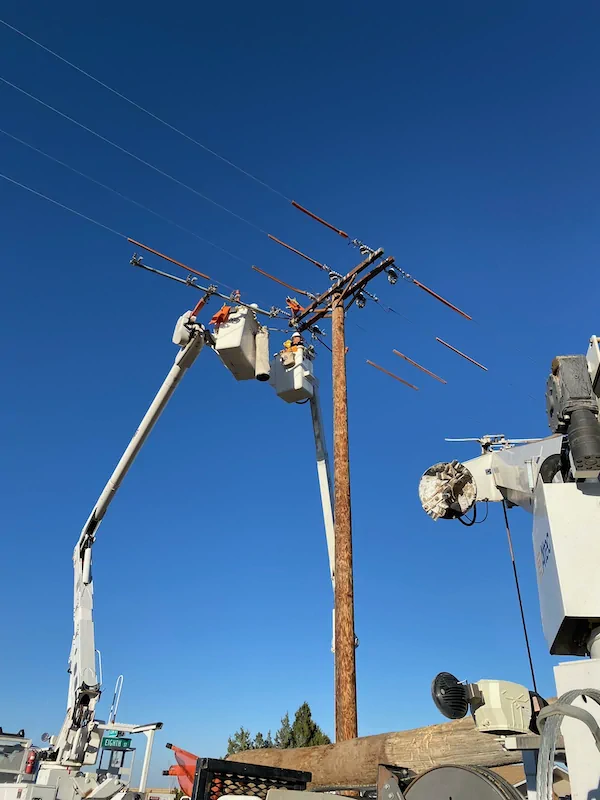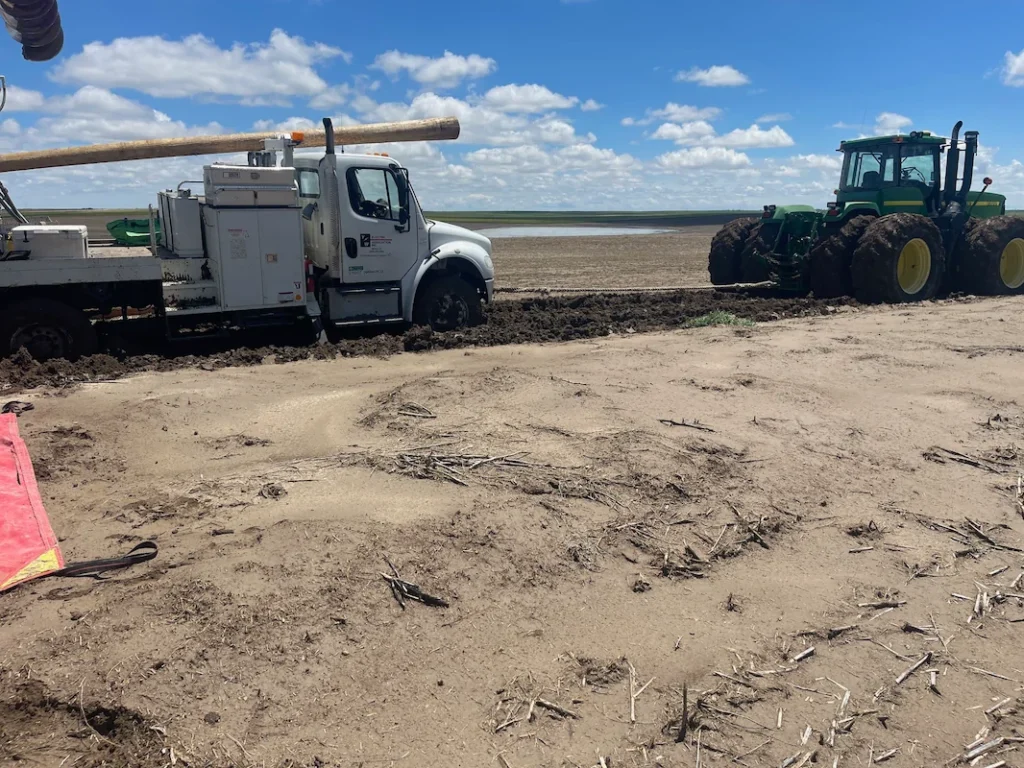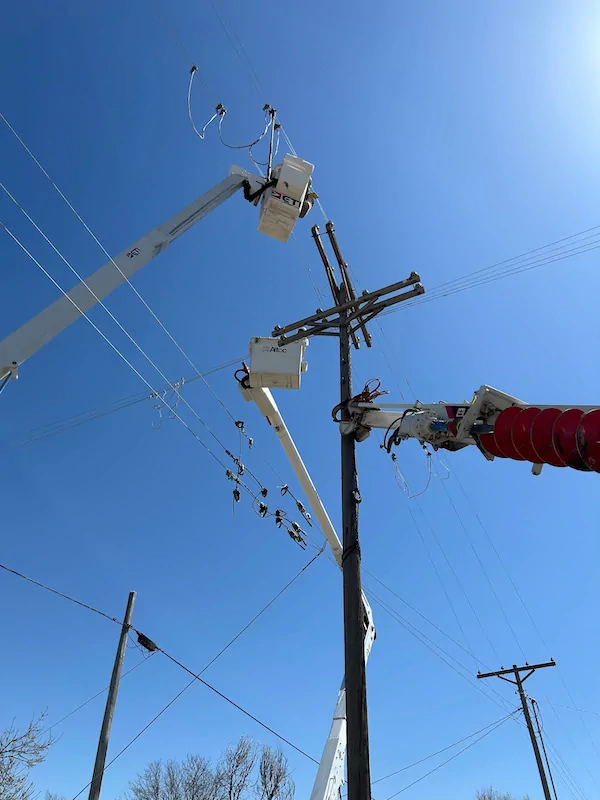Electric lineworkers put their pants on one leg at a time like the rest of us; they just happen to be flame-resistant jeans so the worker’s skin doesn’t melt if things go sideways with a hot wire. They like to eat dinner with their families, too, but it can come with a side of apprehension when snow is falling, wind howling, or thunder cracking.
The call could come anytime.
“I think they are kind of the forgotten first responder,” says CREA Director of Safety Curt Graham.
It’s their job to head outside so the rest of us can stay safely indoors.
“Nobody thinks about a lineman until their lights go out. A lot of people don’t realize there is a unique skill and person to go do this, to stay out all night long to get your power back on,” Graham continues. “Not everyone can grab 14,000 volts and go up in a snowstorm and put up a wire. You can’t have any quit in you. Not everybody is built to do this job.”

Casey Krening is among the roughly 475 co-op lineworkers in Colorado who are built for this job. Krening, a journeyman lineman for Y-W Electric in Akron, has been preventing and responding to power emergencies for 11 years.
“Probably the worst is at night when it’s blizzarding, low visibility. Everything is different at night,” Krening says. “You can go someplace a hundred times in the day, but when you see it at night, you’re totally turned around and lost.”
Winter is tough, but so are spring and summer. A tornado hit near Akron in 2023, taking dozens of poles down. A couple of weeks later another storm scattered 75 to 100 poles across a roadless area. Krening and his crew cut through fences and drove up sandy hills to get poles upright and lines lifted. He worked a bunch of grueling 14-hour days during that stretch.
One customer brought his crew cookies after the twister. But when the power is out, some folks get frustrated.
“Every lineman that’s working on it is trying to get the lights on as fast as they can,” Krening says. “We’re not napping under the shade tree when people are out of power.”
Sometimes they take on extra risk to avoid shutting off power. “We also do hot work, when the entire job is done with an energized wire. There’s times when it’s not feasible to shut 300 consumers off — especially during the irrigation season,” Krening says.
There are no typical days, but there are constant physical demands including wearing heavy rubber gloves and sleeves for hot work. There is a lot of climbing — lattice, ladders, and poles — and working at a height of about four stories in a bucket or strapped directly to a pole.
On the ground, he and his crew haul heavy tools and equipment and operate hydraulic machinery to repair, take down, or set new poles weighing 700–1,200 pounds. Luckily, that’s what Krening signed up for.
“I like the physical labor. Growing up and going through school I wanted to be outside; I didn’t want to sit still. I wanted to do something creative and work with my hands,” Krening says. He also likes the teamwork. “It’s a big deal when you can trust and know that the guy who’s got your back is doing what he’s supposed to be doing and you don’t have to worry about it.”
“For the most part, we can control a lot of the dangers by doing stuff the right way and the safe way,” Krening notes. “But I think there are risks that you can’t avoid in our job; it’s a dangerous industry.”
Lineworkers are paid well for those risks, but that’s not the most important thing. “I feel pretty good when I get to go home and I’ve been safe and everybody I work with has been safe,” Krening says. “You take the hard hat off and go be a dad for a little while, and that makes everything worth it. I’ve got a wife and two rambunctious boys. I’ve got a bunch of people depending on me.”
His kids are 1-1/2 and almost 4. They’re growing up in the same town he did. His wife teaches at the local school. Krening’s neighbors are customers. He often thinks about the person at the end of the line.
“I like being able to help people,” he says. “I love it. I love what I do.”

Power poles are sturdy, but sometimes are no match for Mother Nature. Lineworkers are always ready to head out to repair broken equipment, even in the most dreadful conditions.
Lineworkers brave great heights to work on power lines and other electric distribution equipment.
Photos by Casey Krening


Lineworker Appreciation Day is April 18. Cookies are optional. A smile and a wave go a long way too.
Patricia Logan is a Colorado writer and filmmaker who loves to learn and share stories about this precious earth and its fascinating people, places, plants, and animals. She is a graduate of the University of Colorado where she also taught journalism.










